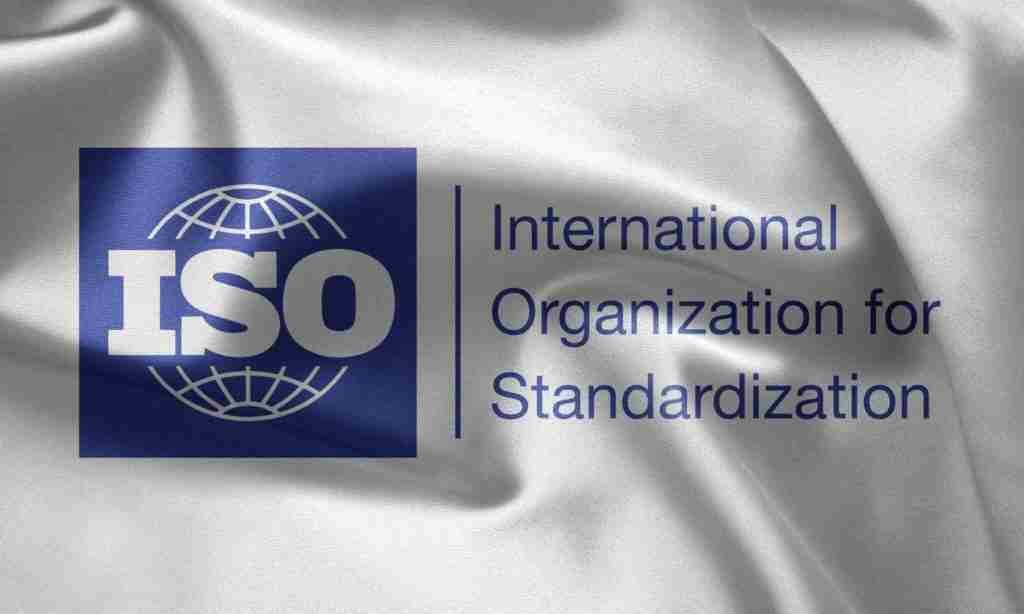Quality management (QM) is a systematic approach aimed at ensuring that an organization consistently meets or exceeds customer expectations. It encompasses a range of practices and principles that assist businesses in maintaining high standards in their products and services.
The historical evolution of quality management can be traced back to the early 20th century, originating with the work of pioneers such as W. Edwards Deming and Joseph Juran. Their ideas laid the groundwork for modern quality assurance, focusing on the importance of continuous improvement and customer satisfaction.
Over the decades, quality management has evolved significantly, transitioning from quality control, which emphasizes inspecting and testing to detect defects, to Total Quality Management (TQM). TQM is a holistic approach that involves every employee, promotes a culture of continuous improvement, and integrates quality principles across all operations.
Quality assurance, another vital component, focuses on developing processes and standards to ensure products and services consistently meet predefined criteria throughout their lifecycle. In today’s competitive global market, effective quality management is indispensable for business success, driving customer loyalty, reducing operational costs, enhancing overall performance, fostering innovation, strengthening brand reputation, and ensuring long-term sustainability.
Core Principles
Quality management is built upon a framework of core principles that guide organizations in delivering high-quality products and services. These fundamental principles are interconnected and reflect the values and intentions that drive quality enhancement throughout an organization.
Customer Focus
Customer focus is a pivotal principle in quality management, emphasizing the importance of understanding and fulfilling customer needs and expectations. This principle is crucial not only for the delivery of superior products and services but also for fostering long-term customer relationships. Organizations that prioritize customer focus tend to cultivate a culture centered around continuous improvement and responsiveness to customer feedback, which is essential for navigating the dynamic business landscape.
Effective customer focus begins with a comprehensive understanding of customer preferences, aspirations, and experiences. Businesses leverage various tools such as surveys, interviews, and focus groups to gather insights about their target audience. For instance, a company like Amazon prides itself on its customer-centric approach, utilizing data-driven analytics to tailor recommendations and improve user experience. By actively listening to its customers, Amazon can swiftly adapt its services and offerings, resulting in enhanced satisfaction and loyalty.
Moreover, companies that exemplify strong customer focus often experience not only increased satisfaction but also a significant boost in repeat business and referrals. A case study involving Toyota illustrates this principle effectively; the automotive manufacturer has long emphasized the voice of the customer in its production and design processes. This commitment led to tangible improvements in product quality and a reputation for reliability, distinguishing Toyota from competitors in the automotive industry.
Ultimately, fostering a culture of customer focus can lead to a more engaged workforce, as employees understand their role in contributing to customer satisfaction. This alignment significantly enhances overall business performance, maximizing not just revenue but also the brand’s reputation in the marketplace. Through consistent efforts to meet and exceed customer expectations, organizations can achieve sustained success in an increasingly competitive arena.
Continuous Improvement
Continuous improvement is a fundamental principle of quality management that emphasizes the necessity for organizations to consistently enhance their processes, products, and services. This principle acknowledges that no matter how proficient an organization is, there is always room for improvement. By adopting a mindset geared towards incremental advancements, businesses can maintain and elevate their quality standards effectively.
The methodology commonly associated with continuous improvement is the Plan-Do-Check-Act (PDCA) cycle. This approach encourages organizations to establish a plan for improvements, implement the changes, assess the outcomes, and then make the necessary adjustments based on the feedback received. This cyclical process ensures that organizations not only initiate improvements but also continuously refine their strategies based on actual performance data. The PDCA methodology underscores the significance of a feedback loop, which is pivotal in identifying areas that require enhancements and recognizing successful practices that should be perpetuated.
Innovation serves as a cornerstone in the realm of continuous improvement. Organizations are encouraged to foster a culture that embraces change and encourages creativity. By empowering employees to propose changes and challenge the status quo, companies can uncover new possibilities that can lead to significant improvements. Moreover, adopting technological advancements can streamline processes, reducing errors and expediting service delivery.
Engaging all personnel in the continuous improvement process is essential. Training and development initiatives help reinforce the importance of adaptability and innovation, generating a workforce that is agile and responsive to change. Overall, the principle of continuous improvement is not merely a set of practices but a comprehensive philosophy that informs an organization’s operational ethos, thereby enabling it to thrive in a competitive landscape.
Leadership and Engagement
In the realm of quality management, the significance of strong leadership cannot be overstated. Effective leaders play a pivotal role in establishing a quality-oriented culture across organizations. They set the tone by demonstrating a commitment to quality, which trickles down through every level of the organization. Charismatic leaders inspire their teams, providing a clear vision of what quality means and encouraging the adoption of best practices. They facilitate open communication, which is fundamental for fostering an environment where quality is prioritized, and employees feel empowered to voice their ideas and concerns regarding quality improvements.
Moreover, leadership in quality management requires a nuanced understanding of employee engagement. Engaged employees are more likely to embrace quality initiatives, as they feel a sense of ownership over their contributions. This ownership translates into an intrinsic motivation to achieve quality goals and promote continuous improvement. Thus, leaders must actively foster this engagement by recognizing and rewarding employees for their efforts and by involving them in decision-making processes. This empowers employees, instilling a shared responsibility for maintaining high standards of quality within their teams.
To cultivate such a quality-driven culture, leaders should develop certain qualities that are essential for effective quality management. These include strategic thinking, adaptability, and excellent communication skills. Additionally, leaders should seek to create a supportive atmosphere where employees have access to resources and training needed to perform their roles effectively. Strategies such as regular feedback sessions, team-building exercises, and quality training programs can significantly enhance employee participation in quality management initiatives. Through these measures, organizations can ensure that leadership efforts translate into lasting engagement and commitment to quality, ultimately driving overall performance and success in quality management systems.
- The involvement of people is another fundamental principle. Engaging all employees in the quality management process ensures diverse perspectives and innovative solutions emerge. A service organization that empowers its staff to suggest process improvements can lead to streamlined operations and enhanced service delivery.
- Adopting a process approach is essential for understanding how various activities interrelate and contribute to achieving desired outcomes. For example, an organization that maps its processes can identify inefficiencies and implement changes that optimize quality.
- Evidence-based decision making is vital for adopting a systematic approach to problem-solving. Organizations that rely on data and analytics can make informed decisions that bolster quality.
- Relationship management emphasizes the importance of fostering healthy relationships with stakeholders, including suppliers, customers, and employees, all of which contribute to overall quality outcomes.
- Implementing norms encourage a systematic approach to managing processes, making it easier to identify areas for improvement and implement changes.
ISO, the International Organization for Standardization, develops international standards that help businesses comply with regulations and improve efficiency. Following ISO standards enhances quality management systems, leading to increased customer satisfaction and trust.
To incorporate ISO standards, organizations should conduct regular employee training and audits to ensure quality remains a primary focus. These standards provide a structured approach to achieving consistent quality and foster a culture of continuous improvement, helping businesses meet customer expectations.
These core principles of quality management collectively establish a robust foundation for organizations striving for excellence. By understanding and implementing them, businesses can enhance quality, satisfy customers, and achieve sustainable success.
Tools and Techniques
Quality management employs a variety of tools and techniques designed to enhance organizational processes and boost customer satisfaction. Among the most recognized methodologies are Lean Management, (Lean) Six Sigma and KAIZEN, all of which focus on the elimination of waste and defects while ensuring consistent quality output.
- Lean Management principles aim to streamline processes by focusing on value creation and eliminating non-value-added activities, ensuring operational efficiency and waste reduction.
- (Lean) Six Sigma, a data-driven approach, utilizes statistical analysis to identify variances in processes and eliminate defects, achieving near-perfect quality levels through precise measurement and control.
- KAIZEN, rooted in continuous improvement, encourages organizations to foster a proactive culture where employees at all levels identify inefficiencies and implement small, incremental changes that contribute to long-term success.
Key tools like the PDCA cycle (Plan-Do-Check-Act) play a crucial role in quality management by supporting continuous improvement. This iterative process enables organizations to plan and implement changes, evaluate results, and refine initiatives. Another essential tool is the cause-and-effect diagram (fishbone diagram), which helps identify potential causes of problems, allowing organizations to target root issues effectively. Control charts are also vital for monitoring process variations over time and detecting deviations to ensure consistent quality.
Process mapping helps organizations visualize workflows in detail, making it easier to identify areas for improvement, optimize operations, and reduce inefficiencies across processes. By adopting and integrating these tools, organizations foster a culture of continuous improvement, which enhances their ability to consistently meet and exceed customer expectations while driving operational success.
“Quality means doing it right when no one is looking.”
– Henry Ford
Challenges and Future Trends
Implementing quality management practices can be an arduous endeavor for organizations.
- Resistance to change is a common challenge in quality management, as employees may hesitate to adopt new methods due to uncertainty about their effectiveness, fear of disruptions, or the perception that existing practices are adequate. Strong leadership, coupled with clear communication and support, is crucial to fostering a culture of adaptability and ongoing improvement.
- Resource allocation presents another significant challenge, as quality management often requires substantial investments in training, tools, and technology, which may be hard to justify during financial constraints. Organizations must balance these expenditures with strategic planning to ensure measurable returns while maintaining adequate personnel to sustain quality processes across all operations.
The future of quality management is shaped by technological advancements like AI and machine learning, enabling real-time monitoring and predictive analysis of quality issues. A focus on sustainability and corporate responsibility drives organizations to integrate transparency and ethical standards into their practices. By fostering innovation and accountability, companies can adapt to evolving demands and maintain a quality-centric culture.
Ninja Services
Pragmatic, professional engagement rooted in global experience – Ninja Services to navigate complexity, optimize operations and drive results through Value Creation.
My Background includes well-developed, solid Core Competencies and is available to address diverse business needs, ensuring exceptional outcomes. I offer tailor-made solutions for both temporary assignments and permanent roles and am available for global travel on a flexible basis.
Contact for effective support in navigating challenges and driving success.
What’s More
The posts in My Blog feature reflective, story-driven pieces rooted in personal and societal insights.
The topics in My Interests explore abstract, philosophical ideas and their cultural and societal impact.




















